What are head lice? (and how to treat them the right way)
Head lice, or Pediculus humanus capitis, which translates to head louse, are a parasite affecting humans around the world. In total there are over 5,000 different species of lice! There are many types of lice that affect different animals, but the head louse only affects humans.
There are two other species of lice that can infest humans, body lice (Pediculus humanus humanus Linnaeus) which can unfortunately lead to some diseases such as louse-born typhus fever and trench fever, and pubic lice (Pthirus pubis). Amazingly, this issue with typhus was a major cause of Napoleon’s failed attempt to invade Russia in 1812!
Fortunately, head lice are mostly harmless and do not cause disease, however they can lead to complications from itching such as bleeding on the scalp, difficulty sleeping, and are generally a nuisance people would prefer to be rid of.
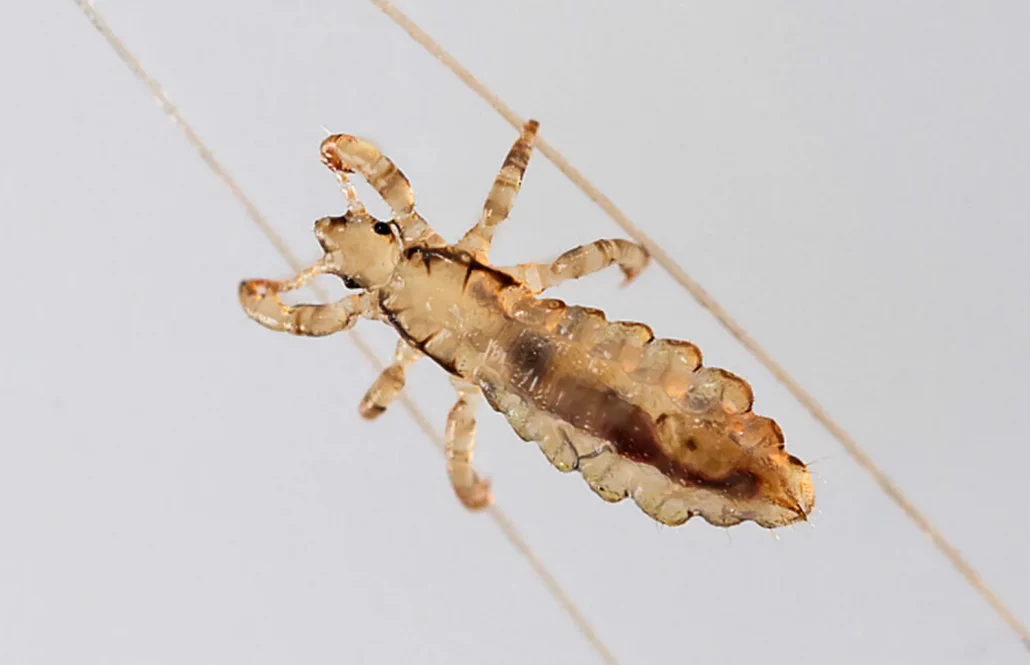
What are lice eggs?
Head lice eggs, otherwise known as nits, are the first life cycle stage of lice. Head lice eggs are small and hard to see, but they can be found on a person’s hair, skin, clothes, and bedding. Lice eggs attach to the hair shaft near the base of the scalp. Nits take 7 days to hatch from their shell, before advancing to the secondary stage of nymphs, and finally to the third stage as an adult head louse.
The life cycle of head lice and where they lay their eggs
In the 30 days that adult lice live, they must mate, lay eggs, and feed on blood multiple times per day. Lice go through a three-part life cycle, beginning as eggs or nits, hatching and becoming nymphs, and maturing as fully-grown adult lice. Lice incubate inside the egg for about a week before the nit bursts out of the shell, leaving behind a yellowish, hollow capsule. From there, the nymph emerges and matures over the course of a week.
In the final stage, the adult lice can survive for 3 weeks. During this time, female head lice will be prioritizing laying eggs. As the female lays eggs, she creates a secretion that glues the louse to the hair shaft. Then, the cycle continues.
Like many parasites, lice must be connected to their host in order to survive. Nymphs must drink blood every couple hours, while adult lice can survive for only a day or two without drawing blood from the human scalp. When someone with an active infestation comes in contact with another person and their heads are close, lice can crawl from one head to another, spreading the infestation. Children are most commonly the ones infected with lice and tend to spread them at school, on sleepovers, and at summer camps.
What Do Lice Eggs Look Like?
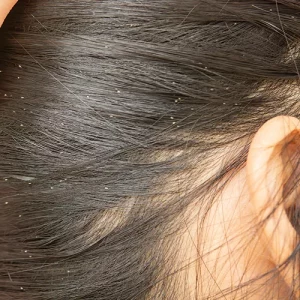
Head lice eggs are yellow or white in appearance, are between .03 to .08 mm large, and are oval-shaped. A fresh head lice egg has an appearance often likened to a sesame seed. As you can see from the picture above, nits can blend in with a person’s hair.
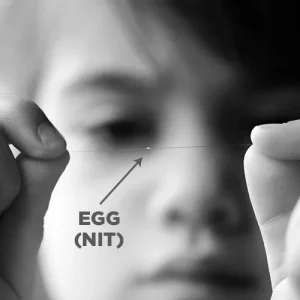
Head lice eggs can easily be mistaken for dandruff. How do you know if it is a lice egg? The best way to tell the difference is to brush them out – if they come out easily, it is dandruff, if they stick securely to the hair shaft it is most likely head lice eggs.
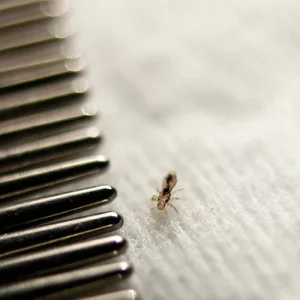
Adult lice are a small insect with 6 legs, about 2-4mm in size. Lice can often appear similar to the hair color of the person they’re infesting, which can make them tricky to spot! As such, they range in color, from a more translucent yellow to deep brown. They have a small head and oval-shaped body. They crawl extremely quickly, and can evade your eyes by dashing behind a strand of hair!
Managing A HEAD LICE Infestation
What should I do if I suspect someone in my family has lice?
The first thing to do is a lice screening. At Lice Centers of America, we perform screenings using a comb to be able to tease apart the hair and inspect it thoroughly. We make sure to be in an area with proper lighting, and for extra visibility you may want to grab a flashlight. Look out for small sesame seed type ovals indicating nits. Keep an eye out for adult lice, but be aware they will try to hide and can dash away from you very quickly!
What can be mistaken for lice eggs?
- Dandruff
- Hair product
- Dirt
- Knots in hair
- A skin condition such as seborrhea or psoriasis
- A different type of insect – especially fleas since they are similarly in appearance and cause itching
Is it possible to have lice eggs, but no lice?
Yes, it is possible to only have nits. If you do the screening and find no evidence of nymphs or adult lice, and the nits are found at least a quarter inch from the surface of the scalp, it may indicate an older infestation. If this is the case treatment is not necessary and the hollow lice eggs should be combed out and disposed of. But, it is important to remember that the adult head louse is extremely fast, so it is best to do a screening with a clinician to be absolutely sure the lice infection is eradicated.
What causes lice to reproduce so quickly?
Head lice infest the human scalp and draw human blood, through a parasitic relationship in which the lice are fully dependent on humans. As a result, lice must be able to continuously find new hosts to propagate their species. After a louse emerges from its shell, it begins a moulting process.
Once this is complete, lice quickly mate and female lice lay eggs on the hair shaft. Adult female lice can lay eggs six times a day, so treating a lice infestation quickly is essential to preventing it from becoming even more widespread.
Is it possible To prevent lice eggs from hatching?
Egg lice are very hardy, and can stay attached to the hair shaft despite rinsing the hair or even swimming in a chlorinated pool. In order to treat a lice infestation, every single louse must be killed. If even one louse remains, the cycle will continue. The best way to deal with egg lice and prevent them from hatching is to stop the cycle in its tracks.
How Can Someone Be Rid Of Lice Eggs In Hair For Good?
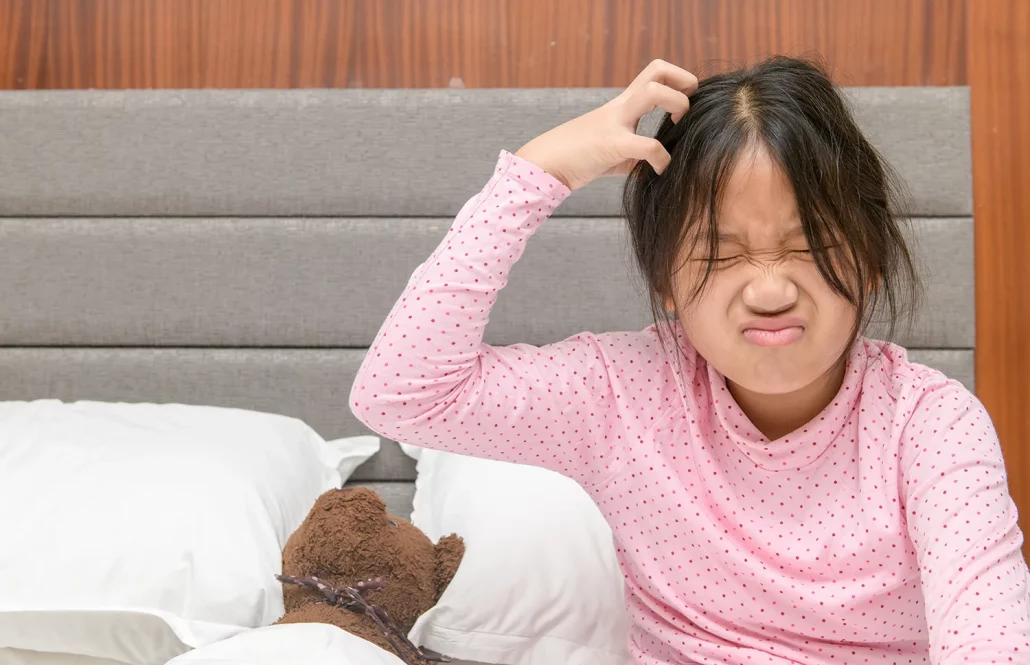
Final Thoughts
Lice are a very common infestation in the United States, but can be easy to treat! Make sure you take action immediately by treating the lice, because they will not just die on their own. If you or your family is struggling with lice, just give one of our lice clinics a call and we’ll walk you through the right solution.

